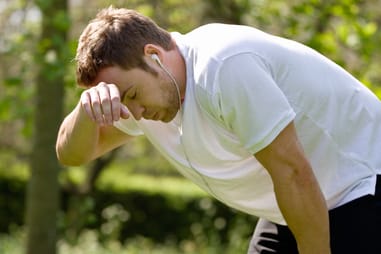Health
Heat Stroke: How to Avoid and Treat it


The heat this week is so intense that you probably felt like an ice cream melting into a puddle. But do you know that you should not undermine this kind of heat because it can lead to grave medical situation?
An example of such circumstance is heat stroke. According to WebMD.com, heat stroke, also called sunstroke, results from prolonged exposure to high temperatures — usually in combination with dehydration — which leads to failure of the body’s temperature control system. It is a very serious form of heat injury and should be considered a medical emergency because it can kill or cause damage to the brain and other internal organs.
Read on to find out how to spot, avoid, and treat heat stroke:
Symptoms of Heat Stroke
The first sign of a heat stroke is fainting. Other symptoms include:
- Throbbing headache
- Dizziness and light-headedness
- Lack of sweating despite the heat
- Red, hot, and dry skin
- Muscle weakness or cramps
- Nausea and vomiting
- Rapid heartbeat, which may be either strong or weak
- Rapid, shallow breathing
- Behavioral changes such as confusion, disorientation, or staggering
- Seizures
- Unconsciousness
How can you prevent heatstroke?
When the heat index is high just like what we’ve been experiencing for the past couple of days, it’s best to stay in cool environment, preferably, an air-conditioned place. If you absolutely must go outdoors especially during high noon, you can prevent heat stroke by taking these steps:
- Wear lightweight, light-colored, loose-fitting clothing, and a wide-brimmed hat.
- Use a sunscreen with a sun protection factor (SPF) of 30 or more.
- Drink extra fluids. To prevent dehydration, it’s generally recommended to drink at least eight glasses of water, fruit juice, or vegetable juice per day. Because heat-related illness also can result from salt depletion, it may be advisable to substitute an electrolyte-rich sports drink for water during periods of extreme heat and humidity.
- Take additional precautions when exercising or working outdoors. The general recommendation is to drink 24 ounces of fluid two hours before exercise, and consider adding another 8 ounces of water or sports drink right before exercise. During exercise, you should consume another 8 ounces of water every 20 minutes, even if you don’t feel thirsty.
- Reschedule or cancel outdoor activity. If possible, shift your time outdoors to the coolest times of the day, either early morning or after sunset.
Other strategies for preventing heat stroke include:
- Monitoring the color of your urine. Darker urine is a sign of dehydration. Be sure to drink enough fluids to maintain very light-colored urine.
- Avoid fluids containing caffeine or alcohol, because both substances can make you lose more fluids and worsen heat-related illness.
- Do not take salt tablets unless your doctor has told you to do so. The easiest and safest way to replace salt and other electrolytes during heat waves is to drink sports beverages or fruit juice.
- Check with your doctor before increasing liquid intake if you have epilepsy or heart, kidney, or liver disease; are on fluid-restricted diets; or have a problem with fluid retention.
- If you live in an apartment or house without fans or air conditioning, try to spend at least two hours each day — preferably during the hottest part of the day — in an air-conditioned environment.
- At home, draw your curtains, shades, or blinds during the hottest part of the day, and open windows at night on two sides of your building to create cross-ventilation
First Aid for Heat Stroke
Call an emergency response team or bring the person to the hospital immediately if you suspect him/her to be having a heat stroke.
While waiting for the paramedics, waste no time in performing first aid. You can move the patient to a cool, shady area and remove any unnecessary clothing.
You can also try the following cooling strategies:
- Fan the patient while wetting his or her skin with water using a sponge, cloth, or garden hose.
- Apply ice packs to the patient’s armpits, groin, neck, and back. These areas are rich with blood vessels close to the skin, and cooling them may reduce body temperature.
- Immerse the patient in a shower or tub of cool water.
- If the person is young and healthy, and suffered heat stroke while exercising vigorously (also known as known as exertional heat stroke) you can use an ice bath to help cool the body. However, do not use ice for older patients, young children, patients with chronic illness, or anyone whose heat stroke occurred without vigorous exercise. Doing so can be dangerous.
Heat stroke is not something to take lightly. The key to avoiding it is to maintain a normal body temperature and making sure that the person is adequately hydrated.








